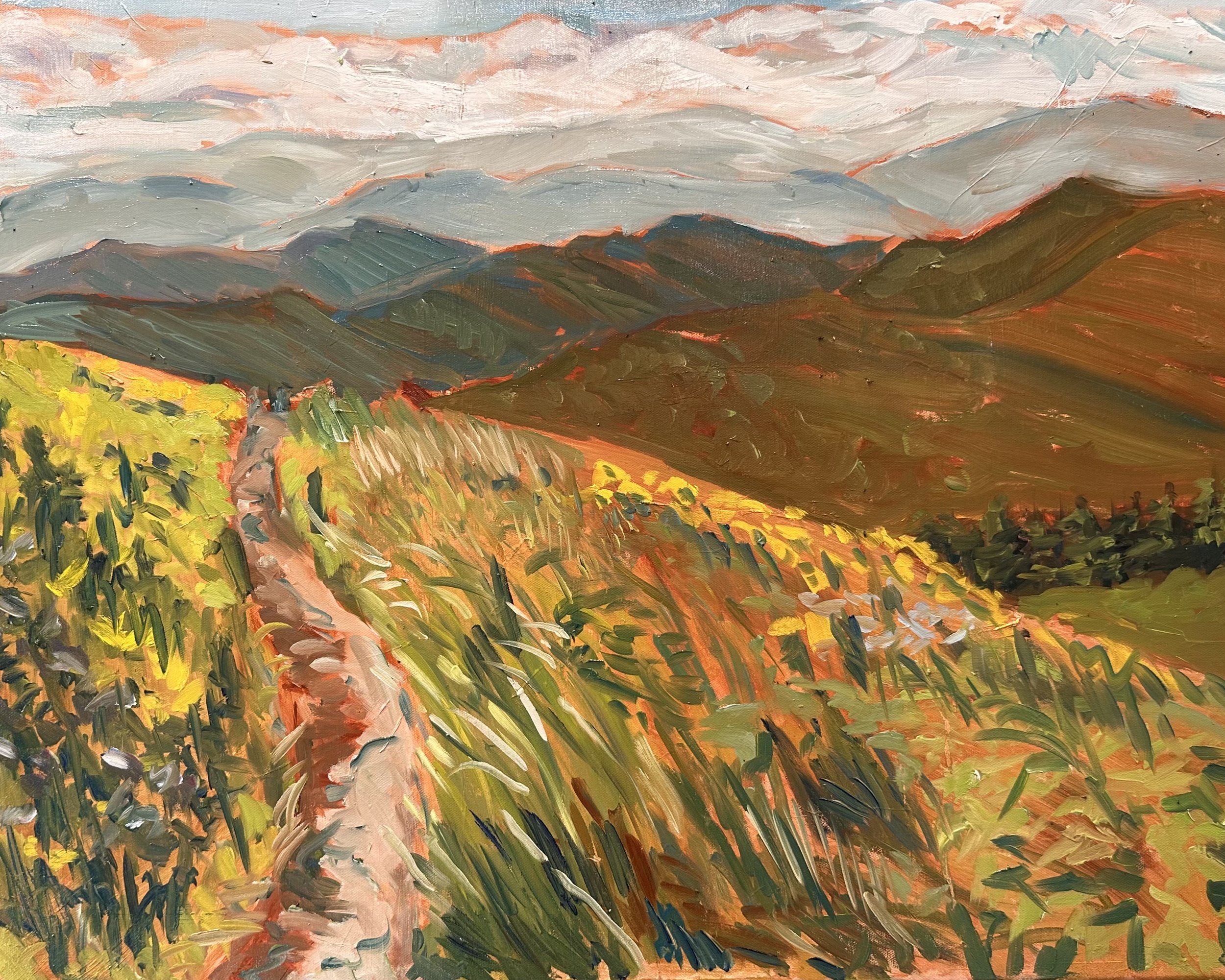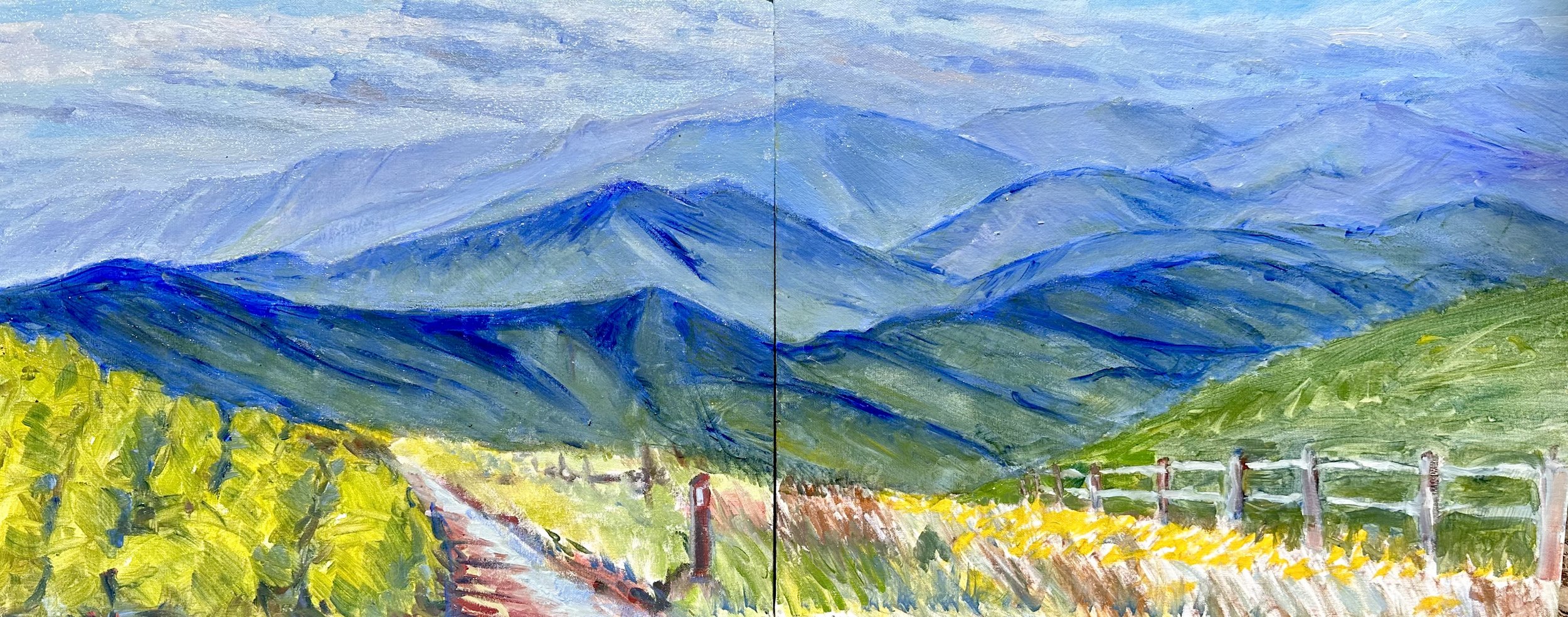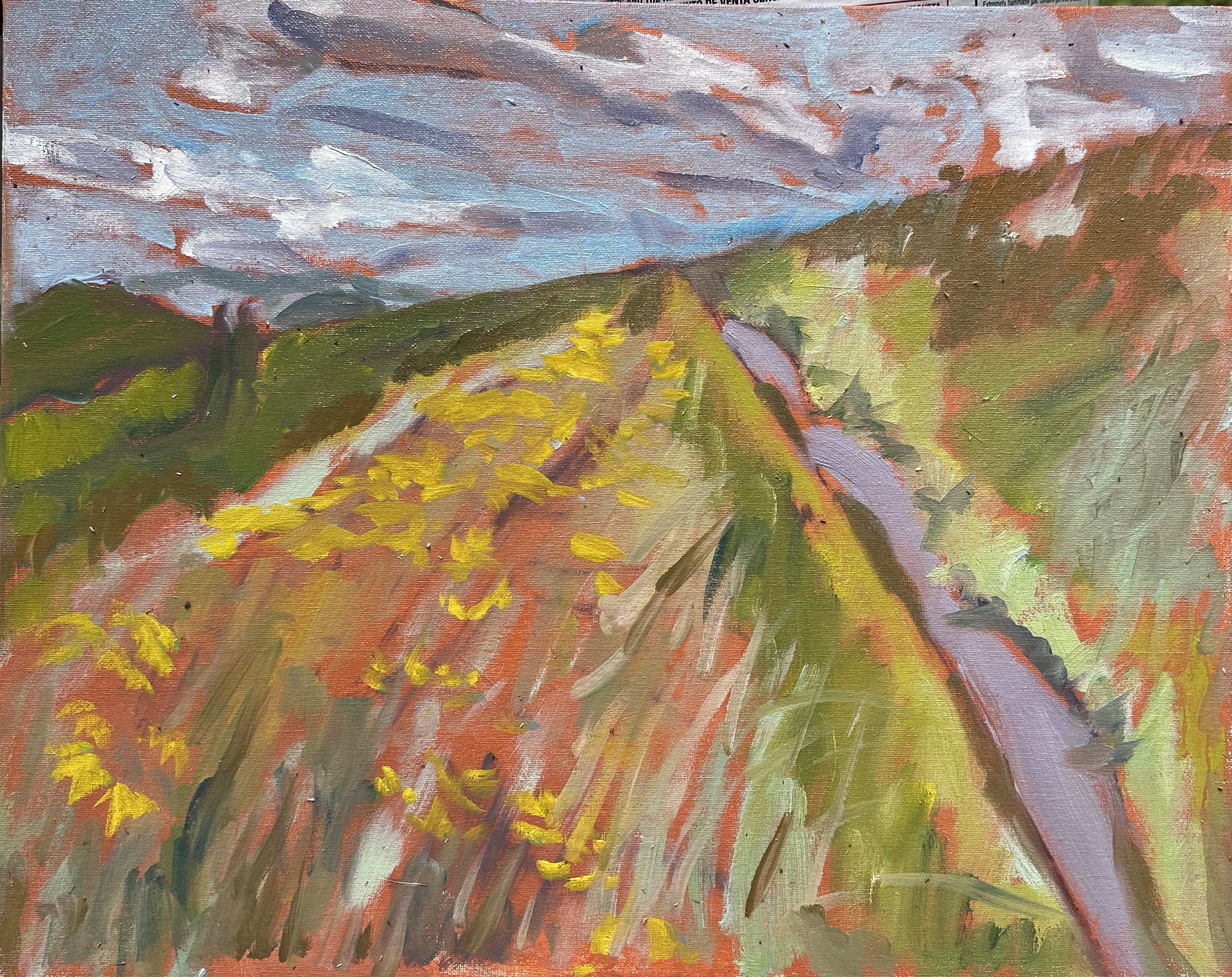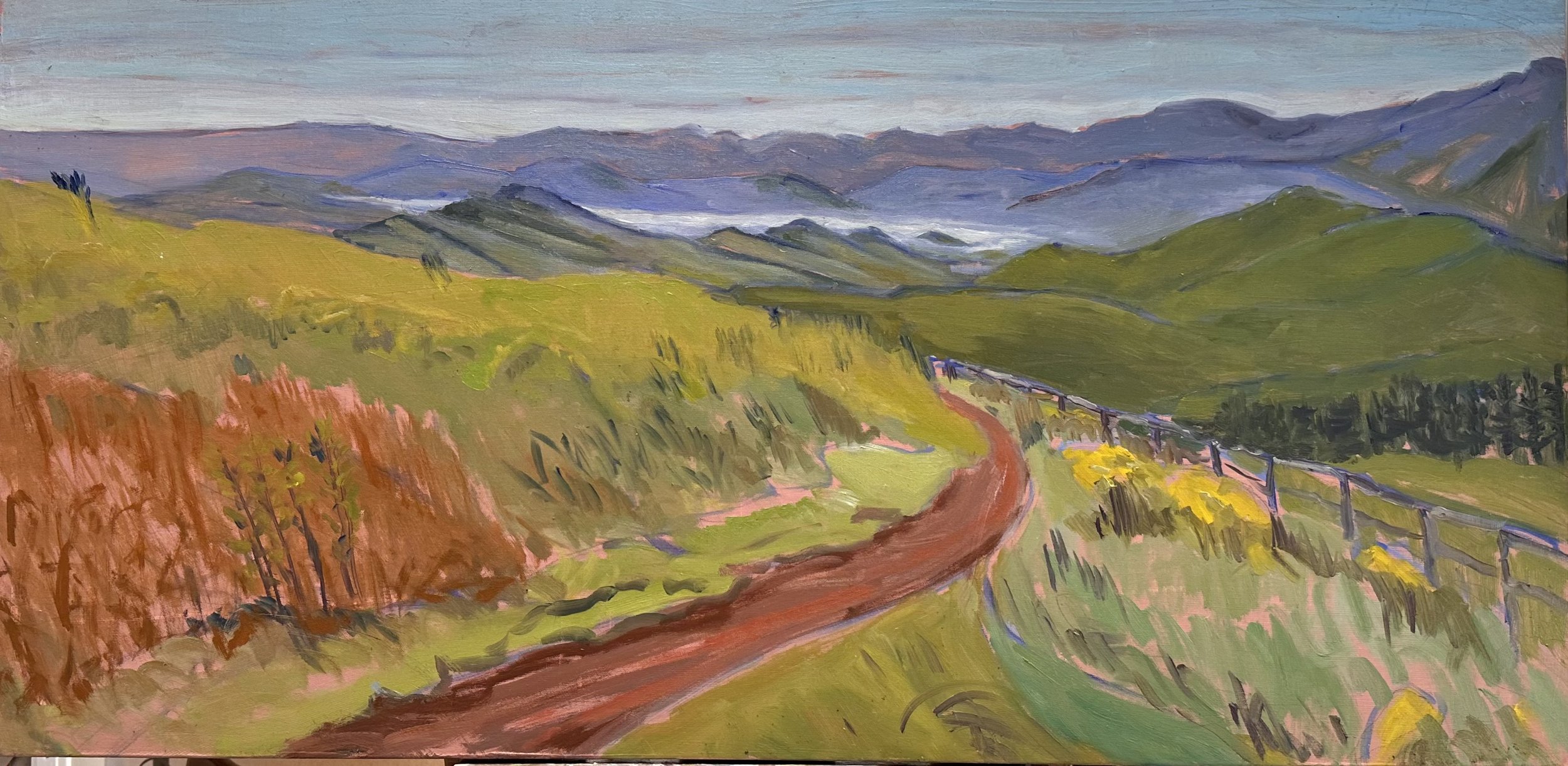As much as I like the first big fall scene I did of Max Patch, it was primarily a studio effort, due to the strong winds at the time I first tried to paint there. I wanted to do more perceptual painting. Over the past 2 weeks, I went up there two more times, first doing a more squared-off version and then a large horizontal format. The first version began with a reddish-brown ground on a 24 x 30 canvas. The conditions were nearly perfect, breezy without getting out of control, gorgeous light, and very few interruptions from hikers and lookers-on. One day I may do a pure monochrome version like the one below just to see what happens.
This piece took a vivid expressionistic direction and I had just enough sense to let it come out and not “fix” it afterward. It shows the energy of the conditions on site, including the strong wind and the mid-day light and it departs from the actual colors thanks to the warm tones of the underpainting. I was very happy when both Christina and two painter friends gave it a strong vote of confidence. I enjoyed the foreground work, the blackberry bushes, and the timothy grass.
Still, that cautious, conservative, protestant voice in my head wouldn’t let this riot go unanswered. “Isn’t all that just a bunch of easy fireworks? Have you regressed? Prove to me you can paint that soft, delicate gradation of receding blue ridge mountains.” I pulled out a couple of panels and did a pano view with a traditional palette to prove to myself that I could render those mountains as they were. I got the basic image down and then spent some time on the gradations and then worked on some thinned-out layers, almost glazing to see what would happen. I liked what I got and put it aside. More or less, I had made the point to myself, even if that foreground was still too lemony.
This pano version was a studio exercise to understand the contours of the scene and the color challenges. I wanted to do a pano scene on site. So a few days later I prepped a 24 x 48 canvas with a reddish acrylic undercoat and set out the next day. I also took a smaller panel as a backup plan. This time I got out there about 2-3 hours earlier and there still were low-lying clouds nestled among the mountains. The light was cool and soft. There were more hikers this time around but I was happy to be left alone. I really liked how the blue lines stood out against that rose-red background. I started with the sky and worked up from the horizon line. Then I worked my way around from right to left and ultimately managed to minimize the fussiness. I used paint that I mixed up in large batches to cover the general area and didn’t bother too much with details. I was working with two palettes, the first was my traditional palette where I could scoop up what I needed without going to tubes and the second was a paper palette for mixing batches of color. This way I could get to a clean surface and also spread out the mixing for larger quantities, then tear it off and do another batch.
This was about a five-hour session on my feet. Toward the end, I slipped back into detail work on the foreground and got discouraged. Here is where the backup canvas came in handy. I put the big one aside and poured all that impulse for fauvist color, detail and decoration into the back-up panel. I turned 180º toward the top of Max Patch and quickly knocked out a sort of sequel to the first scene a few weeks before. It was a good way to purge myself of those impulses.
I got both of these home and took stock of them. I really liked the softness and the almost flat quality of the big scene. The nestled clouds and the closest ridges needed a little more work. The other scene was more than I could understand. I spent some time tinkering with it but I’m not convinced I improved it. Here is the final state of both of these pieces. Overall I am very happy with how this path unfolded.






